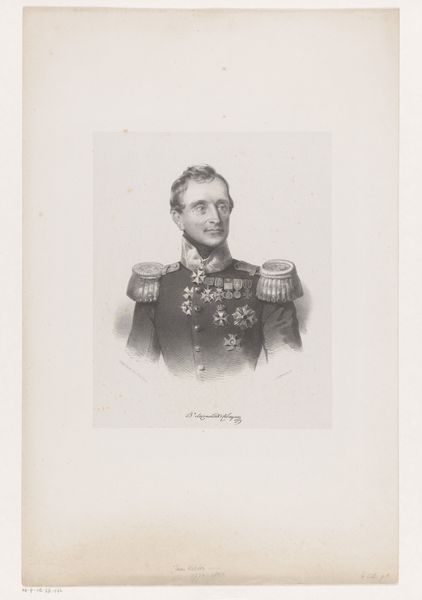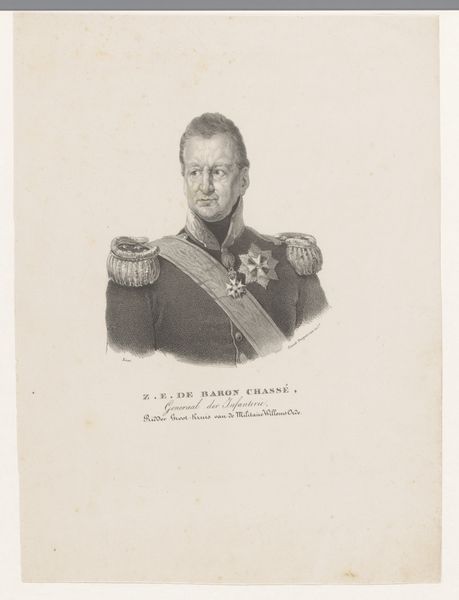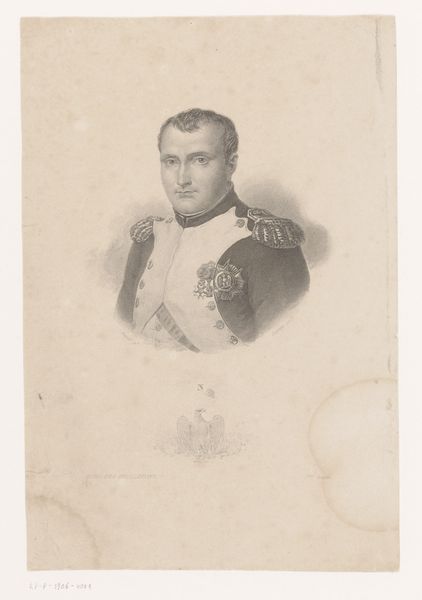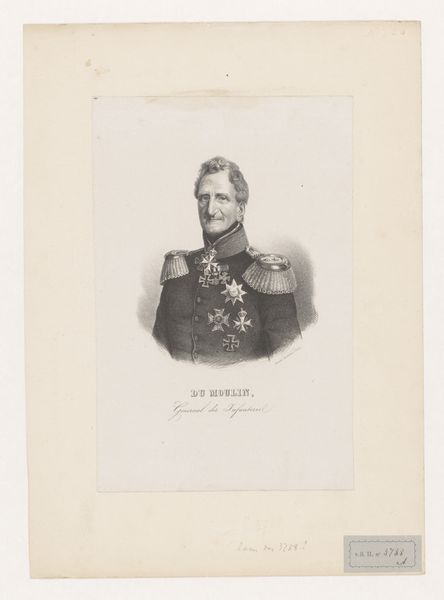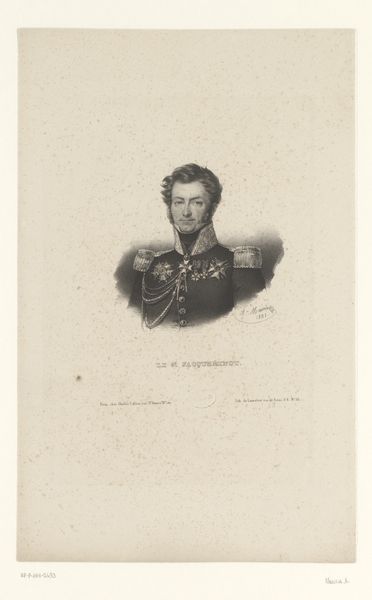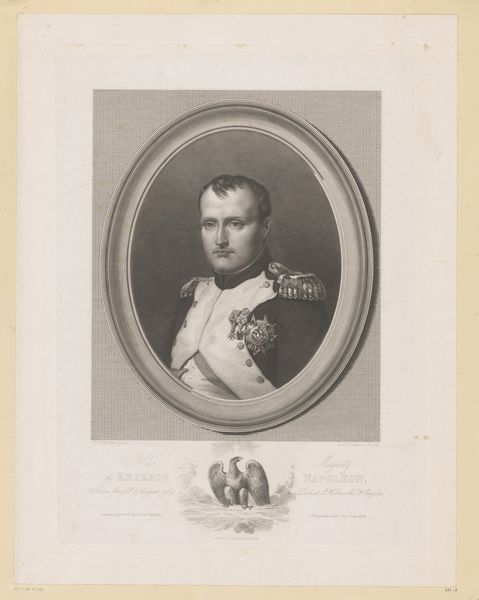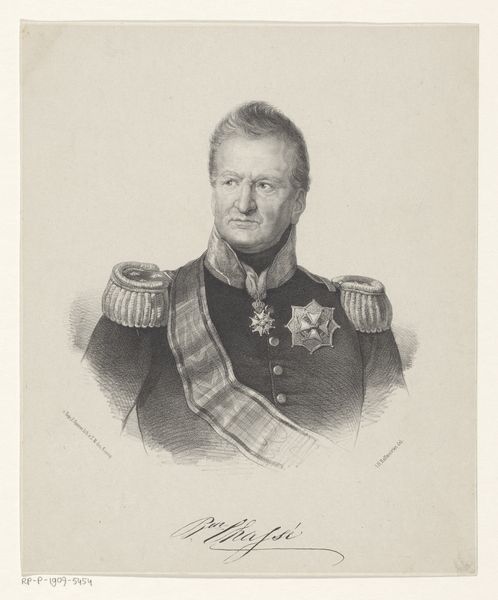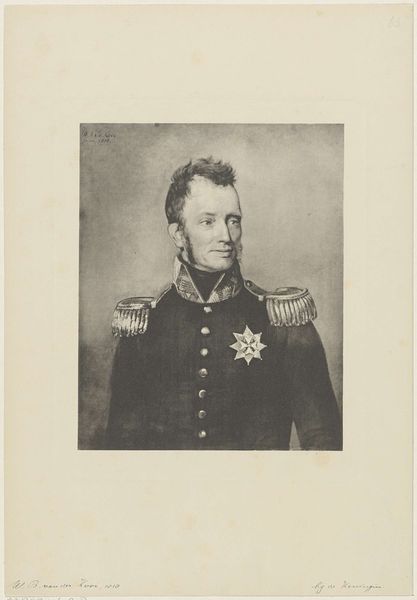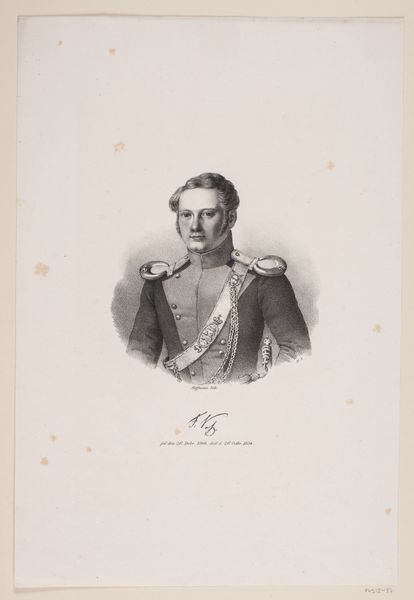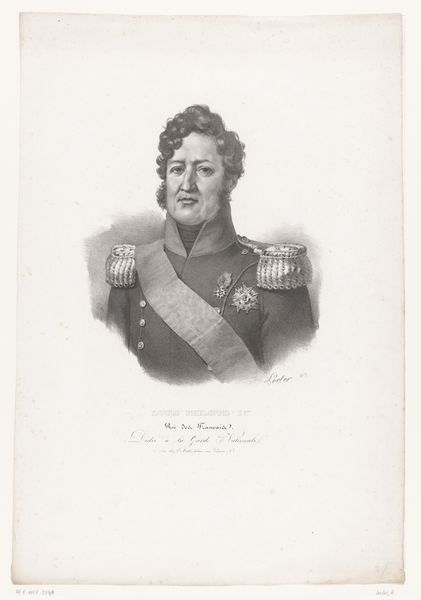
Dimensions: height 540 mm, width 360 mm
Copyright: Rijks Museum: Open Domain
Curator: A stern but elegant gentleman rendered with a soft touch. Editor: That would be the “Portret van Johannes van den Bosch,” a print of a pencil drawing completed by Johan Hendrik Hoffmeister sometime between 1851 and 1883. The precise dating remains, shall we say, in debate. Curator: There is a directness in his gaze, a quality of unwavering leadership. The choice to portray him in full military regalia is striking. Do you read this as an idealized representation, or something more grounded? Editor: I think it reflects how he saw himself, and how he wanted to be seen by posterity. Van den Bosch was a key figure in Dutch colonial administration, so that uniform carries a heavy symbolic weight of power and authority. Neoclassical art always had close ties with state authority in Europe. Curator: Absolutely. The precision in the rendering of his awards – each star and ribbon carries layers of significance about service, honor, and allegiance. These symbols acted as visual cues, immediately communicating the status and virtues expected of leaders in that period. The visual language certainly aligns with that of a man who made a significant impact. Editor: He’s presented as a figurehead in this era of intense colonial activity, isn't he? I mean, art often becomes an instrument, solidifying the images of powerful figures like him for generations to come. What do you make of his serious expression in a society keen to produce serious role models? Curator: Yes, it feels purposeful, a communication that emphasizes dedication to duty. We are witnessing how portraiture functions as a kind of cultural script. It teaches us who to admire and what values to emulate. A carefully built edifice of symbolism all of its own! Editor: And that’s part of the continuing resonance and tension within it. Considering the era, seeing how images of men like Van den Bosch circulate becomes critical to any dialogue concerning representation. Curator: An astute observation. Understanding how symbols operate and the roles they perpetuate is always something that needs further and constant consideration. Editor: Indeed. Food for thought, as always, with the stories of images rippling into our world.
Comments
No comments
Be the first to comment and join the conversation on the ultimate creative platform.
